Presentation
Abdominal pain and palpable mass on physical exam.
Patient Data
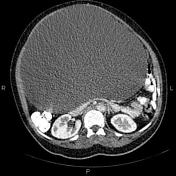

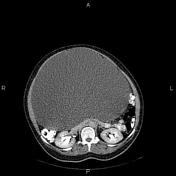

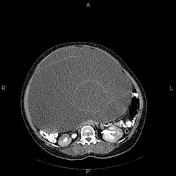

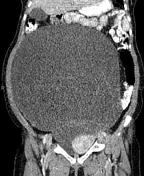



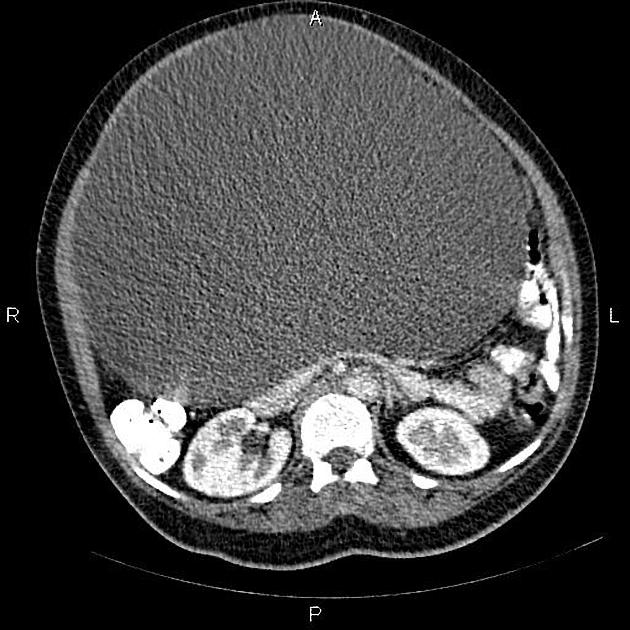
A 320×310×255 mm multiseptated cystic lesion arising from the pelvis and extends superiorly until the level of gallbladder. Marked mass effect is evident on abdominopelvic organs but there is no local invasion or vascular encasement. The ovaries cannot be defined separate than the mentioned lesion. The uterus contains a few fibroids less than 40 mm and displaced left inferolaterally.
Degenerative changes as osteophytosis are seen at the lumbar spine.
Case Discussion
Huge abdominopelvic cystic lesion; pathology proven ovarian serous cystadenocarcinoma which is the malignant form of ovarian serous tumor, the most common type of ovarian epithelial tumor. It is the most common type of ovarian malignancy.




 Unable to process the form. Check for errors and try again.
Unable to process the form. Check for errors and try again.